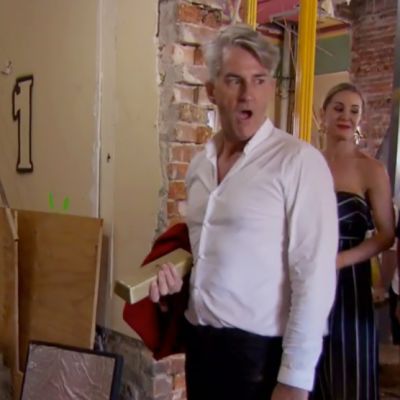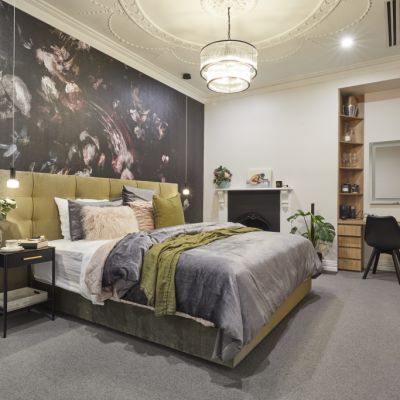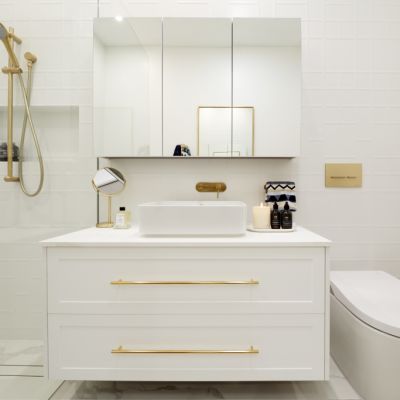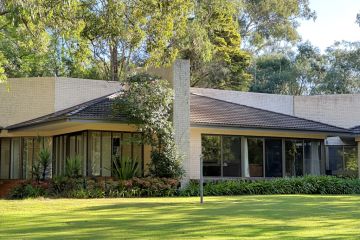Five ways to fail when renovating an investment property
Renovating an investment property is often considered a foolproof plan guaranteed to boost rental return.
The truth is it’s not always as straightforward as it seems and when you’re dealing with an unstable market, the financial gains of renovating can be outweighed by the loss in equity.
These are some of the mistakes I made when renovating my investment property, and what I learnt from the process.
1. Ignoring market trends
As an owner of an investment property for more than a decade I felt I was in a safe position to renovate. However, my lack of market research before I took to the sledgehammer hit my hip pocket hard.
At the time, property prices in Perth were about to plummet, and over the following 18 months vacant properties dominated the market.
Verse Property Group director Steve Erceg said some investors were forced to sell.
“With declining rent and property values, some owners didn’t have the money or luxury to wait out a recovery,” he said.
But the signs were there. I’d heard the mining boom was slowing and the construction industry struggling but I assumed it wouldn’t impact established properties.
And yet years later the market has still not recovered and it’s tipped to be a slow burn.
“I feel that there is a sector of the market that believes the property values will go down further so they feel it may be better to rent, save more deposit, and then buy,” added Erceg.
Before undertaking a renovation for an investment property, research recent sales, investigate trends, and talk to those in the industry.
2. Not watching the rental market
Monitoring the rental market wasn’t on my priority list, but after property prices fell the rental market swiftly followed.
Property managers found it hard to fill the vacant properties on their list, especially older properties.
“In order to remain competitive or appealing, the older properties were including lawn mowing, free rent offers, upgrading appliances,” said Erceg.
After the renovation, my rental income had reduced by $80 per week. But, of course, mine wasn’t the only property. Erceg said the market had dropped significantly across Perth.
“Many owners faced the situation [that] if they didn’t drastically reduce their rent, tenants were not renewing their lease and [the owners were] possibly seeing their property vacant for lengthy period of time,” he said.
3. Living in the property
Living in the property while I was renovating caused extended timeframes and loss of rental income. But there were other costly repercussions.
Not having a working kitchen encouraged takeaway meals, which became a pricey habit.
The size of the property meant storage was an issue and having to pack and unpack tools to keep the site clean took two hours each day.
With every day becoming a hard slog, the renovation took its toll, mentally and physically.
My top tips? Pay for storage, plan the renovation in advance to cut construction times, schedule delivery of materials and stay on top of trades so timeframes don’t blow out.
4. Overcapitalising
Smart renovators recognise when cheap alternatives can be used to cut costs while still offering added value to tenants.
“Every suburb offers differing services and amenities and you need to understand what drives tenant demand,” said Erceg.
In my case, stone benchtops and engineered timber floorboards were a poor decision for the target demographic. Alternative materials would have drastically reduced my costs, and provided a similar finish.
However, while the renovation chewed up a large sum, Erceg said renovated properties rent better than unrenovated homes in a tough market.
“With the lower rent values, tenants have greater choice and … the right to be fussy in their property selection,” said Erceg.
I found that while I did overcapitalise, I secured tenants quicker than landlords of similar properties in the area.
5. Refinancing to renovate
Extending my home loan to renovate was a risk that didn’t pay off, and a once-great investment was now a drain on the bank account.
Before borrowing to fund a renovation, investors need to be confident they’ll benefit through higher rental return. It can help avoid a risky situation in an unstable market and ending up with a property with little to no equity.
Despite the setbacks, I don’t regret all of it. While the process was disappointing, it was also a big lesson in preparation, research and investing.
And the rental market? It’s not all bad news.
“We have seen that in the past six months the rental market has steadied and even seeing rental increases for the in-demand properties. One of the key indicators is [fewer] tenants are property-hopping and [are] renewing their leases,” Erceg said.
We recommend
We thought you might like
States
Capital Cities
Capital Cities - Rentals
Popular Areas
Allhomes
More










